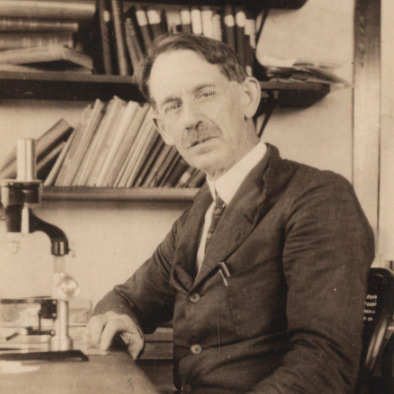Part 1: Eugenics and Heredity

“Eugenics is based primarily upon the facts of heredity, and is properly defined as “The science of the improvement of the human race by better breeding,” or as “The study of those agencies under social control which may improve or impair the qualities of future generations either mentally or physically, ” or “The conscious (as opposed to the instinctive) self-direction of human evolution.”
“Human eugenics is not stock breeding, but its racial progress depends upon such social laws and customs as will direct mate selection along lines which will produce offspring of the most highly talented and fertile nature.”

The woman to the left is tall and has her light hair pulled back. She is wearing a dark top with a tied bow at the neckline and a black belt with a bow as well. Her skirt is lighter in color, has multiple layers with fringe, and is paired with white shoes. The woman on the right comes up to shoulder height and has darker hair. She is wearing opposite colors for her outfit, with a white top and ruffles at the neckline. Her dark skirt is paired with black shoes. Both women wear jewelry like a necklace and watch.
The description underneath the photograph reads: “INHERITANCE IN MAN. In man, shortness is dominant to tallness. Nordic: tall, blond, light-haired, blue-eyed. Mediterranean: short, brunette, dark-haired, brown-eyed.”
RIGHT: A chart labelled “The Chromosomes of Man”. Below the title are two rows with two diagrams each, illustrating two sets of chromosomes arranged in a circular manner. The set on the bottom-left is more dispersed and oval shaped In between the two diagrams per row are two labels. The top says “White.” The bottom says “Negro.” The diagrams are also assigned a number from 1 to 4 which appears below each diagram. The order goes left to right and top to bottom. Below these are two additional diagrams showing chromosomes arranged in a row. The shapes of the chromosomes are slightly different in each row with the first chromosomes on the top row being larger and more curved. The top says “White” above and is labelled 5 below while the bottom says “Negro” and is labelled 6 below.
OPPOSITION TO EUGENICAL ASSUMPTIONS ABOUT HEREDITY
No one denies great differences of gift, capacity and attainment among individuals of all races, but the voice of science, religion and practical politics is one in denying the God-appointed existence of super-races, or of races naturally and inevitably and eternally inferior. … The insidious and dishonorable propaganda, which, for selfish ends, so distorts and denies facts as to represent the advancement and development of certain races of men as impossible and undesirable, should be met with widespread dissemination of the truth.
Dr. W. E. B. DuBois, Director of Publicity and Research, National Association for the Advancement of Colored People, “Manifesto of the Second Pan African Congress,” The Crisis (November, 1921), p. 7. [DuBois was in Europe during the Second Congress delivering the Manifesto of the Second Pan African Congress to imperialist monarchs and statesmen.]


It is particularly in connection with racial questions in man that there has been a great throwing about of false biology. Heredity is stressed as all-powerful; environment as almost powerless: a vicious fallacy, not supported by the results of investigation. We are warned not to admit to America certain peoples now differing from ourselves on the basis of the resounding assertion that biology informs us that the environment can bring out nothing whatever but the hereditary characters. Such an assertion is perfectly empty and idle.
(Herbert Spencer Jennings, Professor of Zoology, Johns Hopkins University, Prometheus; or Biology and the Advancement of Man (New York: E. P. Dutton, 1925), pp. 65-66.)
You must be logged in to post a comment.